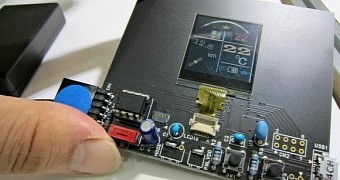When the highly hyped Apple Watch got released into the wild, everybody had questions about the wearable’s battery life.
The Cupertino tech giant failed to talk about this important aspect, but soon voices emerged saying that the Watch will have to be charged daily, which put a damper on everybody’s expectations.
But don’t worry, there’s still hope of getting that long-lasting wearable you have been dreaming of since their dawn.
Sharp targets wearables with its new LCD panel
According to Nikkei, Sharp is developing a “color memory LCD panel” that’s to be embedded into wearables and will dramatically lower power consumption.
So smartwatches and smart bands of the future will be able to offer a longer battery life than what’s being offered on the market today.
For the moment, Sharp only has a prototype that it is working with. It’s of the 1-inch variety and utilizes 1,000 times less power than any conventional LCD in mobile devices.
According to a Sharp official, the panel is headed for mass production starting next spring in Japan. These panels function so efficiently because they are devoid of a backlight, plus they use semiconductor memory.
The backlight is replaced by ambient light and reflector layers inside pixels that can illuminate what lives on the display.
This system might have its disadvantages – for example, it can’t be used in extremely low-light situation, but chances are you won’t be working out in complete darkness.
However, the display will be readable in direct sunlight during the day when you’re probably most likely to go for a run.
The second feature supporting power-efficiency are the memory chips embedded in the panel which can store images, cutting down the chunks of power needed for data transfer.
Sharp utilizes LCD technology and LTPS (low-temperature poly silicon) for their latest color LCD. The screen supports up to eight colors and is very-low on power sipping.
Wearables would have a better chance at succeeding if they were power-efficient
So as you can see, one of the first world problems while wearables are concerned is on its way of being resolved and wearables of the future will be able to sustain a longer recharge cycle.
It would be interesting to see if a device like the Samsung Gear S which also comes with 3G connectivity, could get a longer battery life.
If the answer is positive, it would be a good incentive for uses to purchase such a device that might come in handy when one is hiking in remote locations and the smartphone battery has run out.

 14 DAY TRIAL //
14 DAY TRIAL //